From Hara Museum, Tokyo
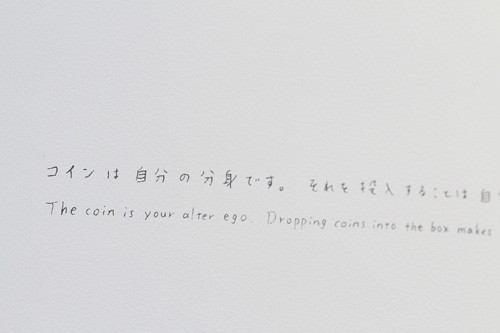
The project to install Yasuhiro Suzuki’s Donation Box Called Well began in the summer of 2010 as a gift to the museum from an anonymous donor, a supporting member of the Hara Museum. The work was originally scheduled to debut on March 27, but this was postponed because of the earthquake. Then a decision was made to donate all contributions made to the box, which would ordinarily go towards the support of Hara Museum activities, to a charity dedicated to the revitalization of art in the earthquake-stricken areas.
On June 26, the artist spoke at the museum. The following are excerpts from his talk.
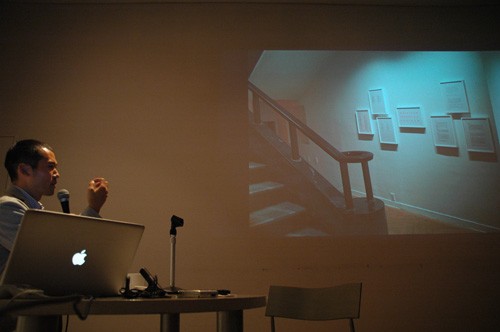
The Image of the Donation Box
At first I thought I would make an ordinary donation box, but I soon realized people would be expecting a different interpretation of that thing called a “donation box.” So I started to look carefully at the boxes at various locations like convenience stores. There I would drop in some coins in, but the act was devoid of any sense of participation. This was before the earthquake, so I suppose people who donate now have a concrete image of where the money will go (to the Tohoku region). But back then, I didn’t, and so I felt the need to reconsider the whole concept of donating.
Participating in the Museum’s Activities Using a Coin as My Alter Ego
When I am creating something, I sometimes feel a growing semblance between me and the subject, to the point where distinctions blur and I become one with it. With this new work, I had the idea from an early stage that the coin could be an alter ego. From this idea, I thought of placing a simple slit in one of the museum walls in place of a donation box, and by inserting their coins into the slit, visitors would become participants in the museum activities.
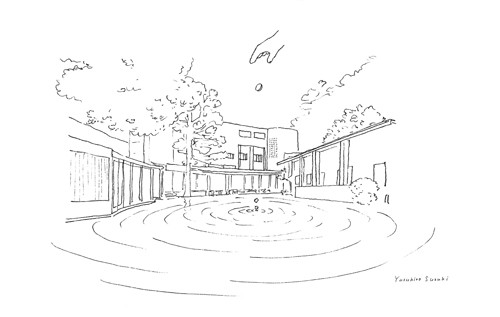
Yasuhiro Suzuki, drawing for Donation Box Called Well, 2011
Another Opening to Museum Participation
When I was small, I believed that somewhere there existed an opening in time and space. So I thought it would be interesting to create a spot that would take you into another dimension, like a hole in a tree that connects the inside of the tree with the outside. But the question that faced me remained: where to install it? It was then that I was drawn to the corner in the museum where information about the museum membership program was displayed, along with the names of the corporate and individual donors. There I learned what it meant to become a member and to make a donation and that there are many ways of involving oneself in the museum’s activities. So I thought of creating another “opening” through which people could play a part that did not simply consist of visiting the museum and looking at the artworks.
Serendipity Leads to Joining of Idea and Place
Mr. N, a Hara Museum supporting member, is one of the first people I met at the museum who was not an artist, who was instead a visitor who wanted to do something for the museum. The museum staff happened to introduce us when I was making the piece “The Zipper Ship” for the Setouchi International Art Festival last year. I was able to complete that work thanks to his support, and once again I am fortunate to have his support for this project. As for the location of the slit, by a stroke of luck I discovered a hollow section in the museum wall that was free of concrete. Studying an old diagram of the museum, I learned that a door once stood at that spot. So it was the coming together of such happy accidents that my idea slowly took shape.
Transformation of Private Thing into Public Thing
When you insert a coin into the slit, what you hear is the sound of the coin dropping into water. Coins make a lot of noise when you drop them on the floor. When that happens, it is impossible not to look in that direction because we instantly connect the metallic sound with money. But I asked myself what can be done to make a coin that used to belong to me into something that doesn’t belong to any one individual? My answer was water. A coin dropped into the slit crosses a boundary to the other side of the wall to become public money; i.e., something that belongs to everyone. I would like people to experience the moment when it becomes a public thing that is then used to help the museum or earthquake and tsunami victims.
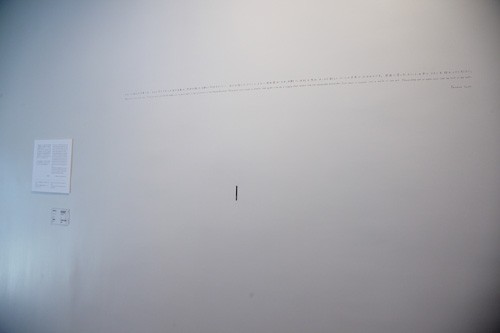
Photo: Hirotaka Yonekura
The images you see through the slit were all taken on the museum grounds. My idea was to discover on my own what was were. I became enamored with those things that change over time and things that move, so I started collecting images of normal everyday phenomena that changed in time, like the sun streaming through the tree leaves or the surface of water swaying. I plan to continue collecting such images and to periodically update the contents behind the wall.
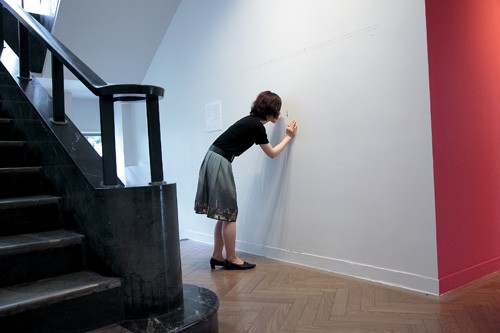
Photo: Hirotaka Yonekura
Yasuhiro Suzuki website
http://www.mabataki.com
—————————————————
Please check here for Hara Museum access information
Ming Wong: Life of Imitation
-August 28( Sun), 2011
Art Scope 2009-2011: Invisible Memories
September 10 (Saturday) – December 11 (Sunday)
Now on sale. Yoshitmo Nara Charity Large-sized Postcard Set
Hara Museum is now participating in MuPon (museum discount ticket system using iPhone application)! http://www.tokyoartbeat.com/apps/mupon
Visit Hara Museum and Hara Museum ARC Twitter (in Japanese only) (account name: @haramuseum @HaraMuseumARC)
http://twitter.com/haramuseum
http://twitter.com/HaraMuseumARC
http://www.haramuseum.or.jp (museum website)
http://mobile.haramuseum.or.jp (mobile site)
